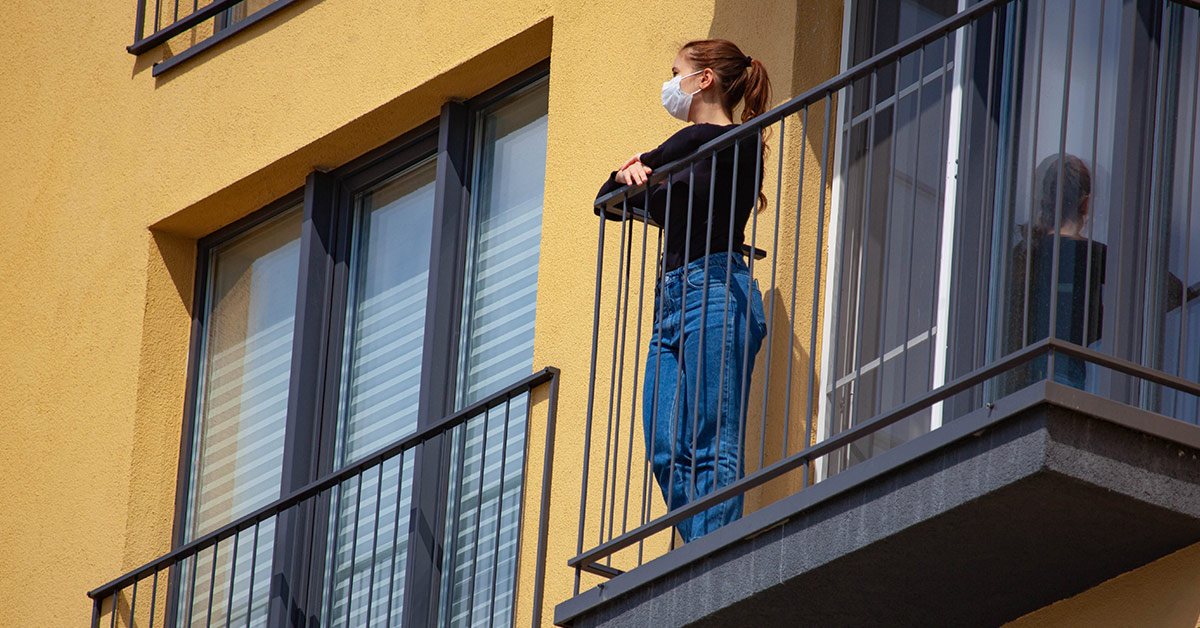In the waning days of the Trump administration, Congress passed another $25 billion in pandemic-related rental assistance for struggling Americans and extended eviction moratoriums through this past January. But the question is, what happens if the federal relief ends this year?
Generally speaking, apartments have done better than other commercial real estate asset classes and lenders are still comfortable with them. A potentially big problem, however, looms over the sector when the rent support ends. Late this past January, millions of Americans were behind on their rent payments, relying on a willingness of landlords to defer payments, or on state and federal eviction moratoriums that prevent the owners from evicting them.
An estimated 8.96 million renters out of a pool of 56.5 million households were behind on their rent payments, the U.S. Census Bureau reported this past November. Nearly 16 million people in this same pool indicated they had no confidence or only slight confidence in their ability to pay the following month’s rent — suggesting that more renters were falling into debt at the end of last year.
“There is definitely cause for concern,” says Andrew Aurand, vice president of research at the National Low Income Housing Coalition (NLIHC). “[In December 2020], about one in every five renters had reported to the census bureau that they were behind on rent,” he says. “So, 20% of renters, and that’s even higher for the lowest-income renters.”
According to Yardi Matrix, there is not a large looming threat to the stability of the multifamily sector. In its December 2020 report, Yardi stated that rental collections “should hold up,” noting that the most recent pandemic relief bill included $600 in direct payments to most Americans and $300 in weekly unemployment benefits. Yardi also predicted that more federal relief would likely come in 2021, given that the Biden administration is prioritizing COVID-19 relief and Democrats now control both branches of Congress.
In terms of rents, Yardi data suggests that COVID-19 has mainly afflicted high-cost cities, such as San Jose, San Francisco and New York. In San Jose, rents had fallen for seven consecutive months for a total decline of 14.1% from the pre-pandemic level in March 2020. In contrast, rents have been rising in lower-cost metros such as Sacramento and Southern California’s Inland Empire.
Yardi’s year-end report, however, also noted that the U.S. economy remained on shaky ground, COVID-19 was still raging throughout the country and 140,000 jobs were lost this past December. Each of these factors made for an unclear outlook for this year’s apartment market.
Moody’s Analytics also reported that the pandemic was causing serious stress for renters, estimating that 12 million households had fallen behind on rent and utilities. Those with debt were, on average, more than three months behind and were set to owe an average of $5,850 by January 2021, according to Moody’s. Importantly, Moody’s also estimated that aggregate rent and utility debt would surpass $70 billion at the start of this year, far exceeding the $25 billion in relief that was recently passed.
Prior to the pandemic, many low-income renters did not have the financial means to cover their existing rent and sudden emergency expenses. Absent significant further relief, renters will likely have to repay their back rent on top of their regular monthly payments. Many people don’t have the means to do this. Based on 2018 data, NLIHC reported that more than 10 million low-income renters were already spending 50% of their incomes on rent and utilities.
“Even when the economy recovers, their wages are so low that they are going to really have a hard time getting caught up,” Aurand said.
“There’s no safety net to deal with these unexpected financial crises that low-income renters often find themselves in,” he says. “And the pandemic has really highlighted that problem. So, in the longer term, we need better-funded rental assistance in general and also an emergency rental-assistance type of program.”
Caitlin Walter, vice president of research for the National Multifamily Housing Council (NMHC), says her organization’s tracking data suggests that apartment rent-payment rates have held up reasonably well during the pandemic. NMHC’s rent-payment tracker surveys 11.6 million professionally managed apartment units. As of Jan. 20, 2021, 88.6% of households had made a full or partial payment.
This share, however, has been dropping throughout the COVID-19 crisis. As of January 2021, the percentage of on-time payments was down 2.5 percentage points year over year, a decline of nearly 300,000 households. The most significant drop was in the Class C apartment sector, which serves people with lower incomes.
“When you look at the data from the census household poll survey, one of the questions is, ‘How are you meeting your household spending?’” Walter says. “A lot of folks were using unemployment benefits and stimulus money.”
Walter says the $25 billion boost passed by Congress this past December will help, but this relief is not close to matching Moody’s estimate of the debt chasm. She says she isn’t pessimistic about the outlook for the apartment sector as a whole, but rent debt is a serious problem.
“We would like to see more rental assistance get passed,” Walter says. “In terms of the stability of the overall market, the rent-payment tracker has shown that residents will pay if they’re able. The government is, hopefully, starting to realize that this is more of a disaster-relief situation. The more rent relief that we can get, the better.” ●





